9 Garden Hoe Types for Weeds, Vines, Soil, Chopping & More
Author: Chris Miller | Editor: Omar Alonso
Review & Research: Jen Worst & Chris Miller
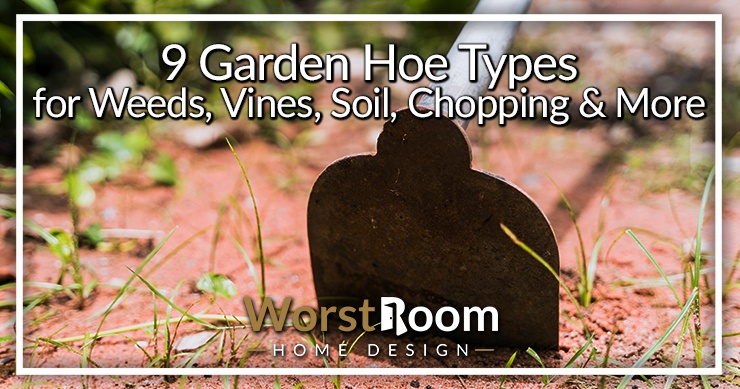
Gardening enthusiasts understand the importance of having the right tools for cultivating their green oasis. Among these essential instruments, the various garden hoe types plays a significant role in keeping your plot tidy and productive.
With various types of hoes available, choosing one may seem overwhelming, but worry not! This blog post will delve into different types of garden hoes to empower you with valuable knowledge about their unique functions and features.
9 Types of Garden Hoes
So join us as we explore this indispensable gardening tool's fascinating world and learn how to select the perfect hoe for your specific gardening needs. Let's look at all the types of these digging tools.
Digging Hoes
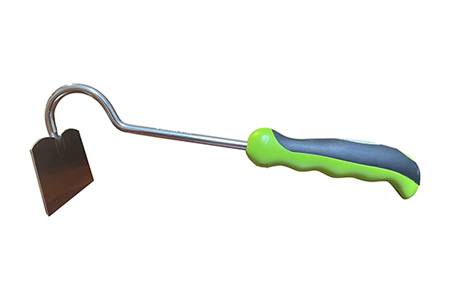
Digging hoes are essential garden tools designed for cutting through soil, digging trenches or furrows, and breaking up clumps of earth when prepping your garden for planting.
With their sharp, flat blades and sturdy handles, they make short work of tough gardening tasks like turning over compacted ground.
There are several types of digging hoes available on the market to suit different needs. For instance, the eye hoe, also known as the scovil hoe – which is considered the oldest variety of garden hoe – has a long handle with a robust head that makes it suitable for tilling large types of gardens or farm plots.
Another popular option is the grubbing hoe, perfect for breaking up hard soil surfaces due to its heavy-duty forged steel construction.
Draw Hoes
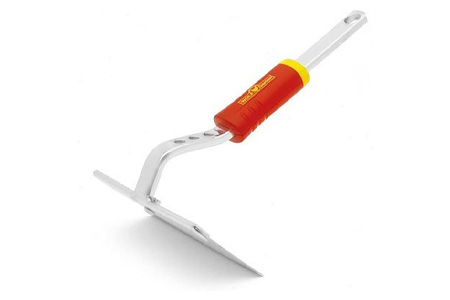
Draw hoes, also known as paddle, chopping, or planter hoes, are a versatile and essential garden tool that has been used for thousands of years by numerous agricultural civilizations.
Featuring a flat blade at the end of the handle, this type of hoe is specifically designed for weeding tasks with a pulling or scraping action.
With the most basic and commonly utilized design among garden hoe types, draw hoes have undergone various modifications in both blade and handle aspects to cater to different gardening needs.
For example, some modern draw hoes come equipped with angled blades to increase efficiency while working in tight spaces or around delicate plants. As you choose your ideal garden hoe, considering factors such as soil type and gardening needs are important.
Scuffle Hoes
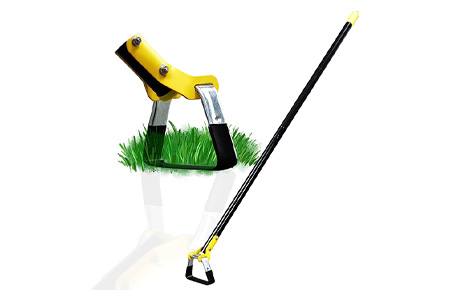
Scuffle hoes are an essential gardening tool, favored by gardeners for their versatile and unique design that easily cuts through soil. As a popular type of hoe, scuffle hoes feature a blade sharp on both edges and are also commonly known as loop or stirrup hoes due to the head's shape resembling a saddle's stirrup.
There is more than one type of scuffle hoe, with the two primary variations being flat-bladed hoes and stirrup hoes. Examples of flat-bladed versions include Dutch push hoes and triangle-shaped models, while stirrup variants maintain the classic loop form.
This diverse array ensures that there is a perfect scuffle hoe suited to various types of weeding tasks and gardening needs.
Paddle or Planter Hoes
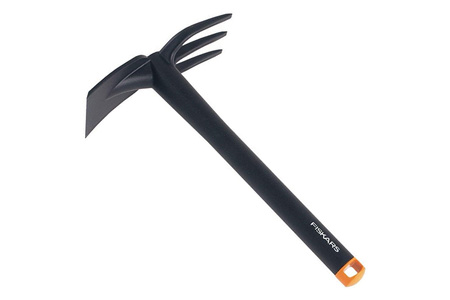
Paddle or planter hoes are an essential tool for any gardener. These hoes are characterized by a small rectangular paddle at the end of the handle, which is inclined at a right angle.
The flat shape of the paddle makes it perfect for pulling, shaping, or drawing soil as needed. You can even use them to chop down and remove those overwatered tomato plants that just won't produce any more.
Thanks to their versatility and ease of use, paddle hoes are considered one of the most basic types of garden hoe available today. They can be used for a wide range of general-purpose gardening tasks including planting seedlings, removing weeds, and leveling off soil in preparation for new growth.
Warren Hoes
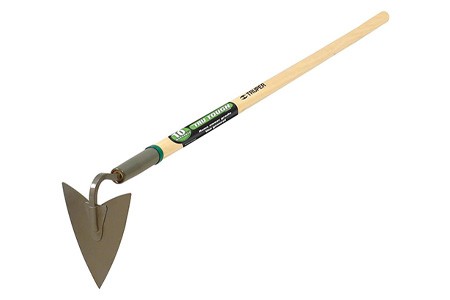
Warren hoes, also known as Dutch hoes, are popular garden tools that come with a triangular-shaped tip. This feature makes them ideal for weeding tight spaces, creating furrows for seeding and tilling.
The warren hoe is usually designed with a heart- or triangular-shaped blade attached at a right angle to the handle, making it easy to use even in confined areas between plants.
This type of garden hoe can be used on all types of soil and is less likely to damage seedlings than other types of hoes.
As explained above, several factors contribute to choosing the right gardening hoe. Garden size and soil type are just two qualities that should be considered before selecting a tool that will make any job easier.
Half Moon Hoes
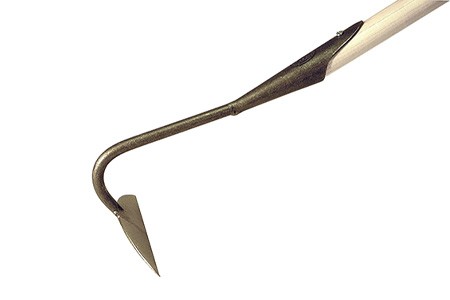
The Half Moon Hoe is a popular draw hoe used in gardening. The name of these garden hoe types comes from the distinctive shape of its blade, which is curved like a half-moon or semi-circle. This type of hoe is perfect for removing weeds and breaking up soil clumps with ease.
Half Moon Hoes have been commonly used in Europe as far back as ancient times for cultivating gardens and farms. The Dutch version has an offset-tapered design that makes it highly durable and long-lasting.
In addition to being a great tool for weeding, these hoes are also designed to make planting easier by creating furrows and rows in the soil where seeds can be sown.
Onion Hoes
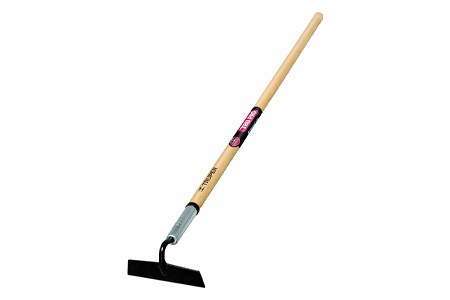
Onion hoes are a unique type of collinear hoe with a long and thin paddle-like blade that is ideal for precision weeding. Their size is typically smaller compared to other types of garden hoes, with a blade design that's similar to half-moon hoes.
If you're looking for an efficient tool for removing grass or clearing land in a small garden bed, an onion hoe may be the perfect choice. These tools are versatile enough to handle nearly any soil type or gardening situation.
Wire Hoes
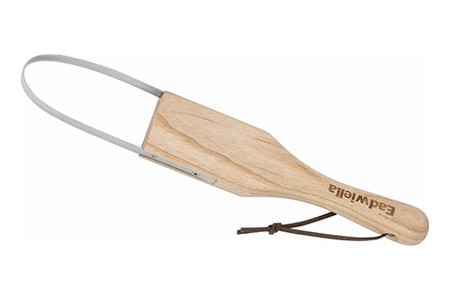
Wire hoes are a type of garden hoe that is designed for removing weeds from soil or gravel using a serrated metal blade. This type of hoe offers excellent precision and control, making it ideal for more delicate weeding work.
Wire hoes are usually small in size with a short handle, which makes them easy to maneuver around plants and other obstacles in the garden.
If you're looking for an effective tool to weed your flower beds, raised beds, or vegetable gardens quickly and easily, wire hoes can be an excellent choice. They work well on both dry and damp soils and can help keep your garden looking neat and tidy year-round.
Grape Hoes
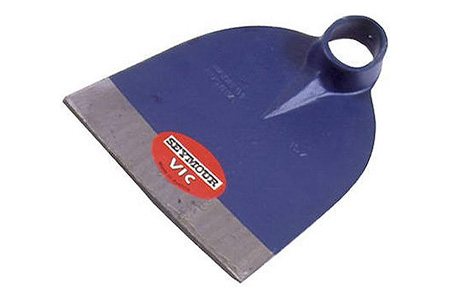
Grape hoes, also known as Italian grape hoes, are a type of hoe that is specifically designed for vineyard management. These specialized garden tools feature a long handle with a small, sharp angled blade that is perfect for cutting weeds and smoothing soil around the vines without damaging them.
When choosing a grape hoe, it's important to consider its weight and balance and ensure it's comfortable to use over extended periods. The angle of the blade must be sharp enough to cut through tough weeds but also gentle enough not to damage the vines' roots.
How to Choose the Right Garden Hoe
Consider your soil type and garden size when choosing your garden hoe types, as certain hoes may be better suited for different types of soil or gardens. Evaluate your gardening needs, including whether you will primarily be weeding or digging, to determine which type of hoe will work best for you.
Consider Soil Type & Garden Size
When choosing the right garden hoe, it's important to consider your garden size and soil type. Different types of hoes work better for different soil conditions, and larger gardens may require more heavy-duty tools.
For example, if you have rocky or hard-packed soil, a digging hoe with a sharp blade will make it easier to break up the ground.
Additionally, the size of your garden should also play into your decision-making process. If you have a small backyard garden or container garden, a smaller paddle hoe or hand-held weeder might suffice.
But if you're planning on cultivating acres of land for commercial farming purposes, a larger Warren hoe may be necessary to get the job done efficiently.
Evaluate Gardening Needs
To choose the right garden hoe, it is important to evaluate your gardening needs. Are you planting a small vegetable garden or tending to a large plot of land? Will you be primarily weeding or also tilling and cultivating soil? These factors can help determine which type of garden hoe will work best for you.
For instance, if you have a larger garden space that requires more frequent weeding, a scuffle hoe may be the most efficient choice as it allows for quick movement along the ground while cutting weeds.
Alternatively, if you are looking to cultivate soil in preparation for planting, using a digging hoe would be necessary.
Maintenance & Durability
Proper maintenance is crucial for the longevity of your garden hoe. Before and after each use, make sure to clean it off and oil it to prevent rusting.
Durability is another critical factor when selecting a garden hoe. Investing in a high-quality garden hoe made of sturdy materials will save you money in the long run as they tend to last longer than cheaper alternatives.
Look for hoes made with durable metals such as stainless steel or forged carbon steel. Finally, don't forget that regular wear-and-tear can happen even with the most durable hoes.
Key Garden Hoe Types Takeaways
- Garden hoes are an essential type of tool for any gardener, farmer, or landscaper.
- There are several types of garden hoes available on the market to suit different needs including digging hoes, draw hoes, scuffle hoes, paddle or planter hoes, warren or Dutch hoe, half-moon hoe onion ho and grape hoe.
- When choosing a garden hoe it's important to consider factors such as soil type and garden size and evaluate your gardening needs to determine which type of hoe will work best for you. It’s also important to take good care of your chosen tool by cleaning them after each use and storing them properly in order to maximize their lifespan.
Those Are the Garden Hoe Types
Garden hoes are essential tools for any gardener, farmer, or landscaper. Whether you need to weed sprawling gardens, prepare soil for planting, or chop through tough roots and weeds, there's a garden hoe that can help make your work easier and more efficient.
With so many types of garden hoes available on the market today, it can be challenging to determine which one is right for your needs. By considering factors such as soil type and garden size, evaluating gardening needs, and paying attention to maintenance and durability when choosing a garden hoe will ensure that you select the perfect tool for the job at hand.
At last but not least it is important to take good care of your chosen garden hoe types by cleaning them after each use and storing them properly in order to maximize their lifespan.



